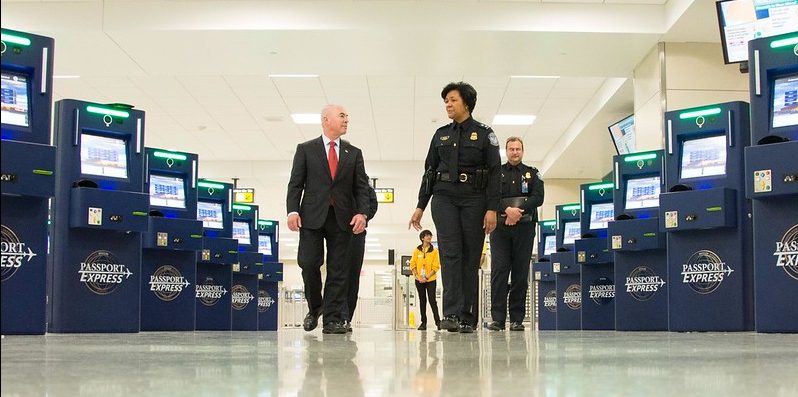“Get Out,” Jordan Peele’s 2017 expectation-defying satire, poked fun at a spectrum of stereotypes – not least that of the Transportation Security Administration (TSA). In the award-winning movie, a certain TSA agent is on time, proactive and helpful, belying the dilatory, bureaucratic long lines commonly associated with airplane security.
Online, TSA has been working so that its heroism is not confined to fictional films. In 2015, the administration launched AskTSA, a multiplatform social media account that provides travel security information and answers users’ questions.
“Our role as a security-focused organization did not have to be in opposition to creating a pleasant customer experience,” said TSA Social Media Manager David Johnston, who works in the Office of Public Affairs.
To date, AskTSA has had more 1 million social media engagements. It lives on Twitter, with the handle @TSA, and Facebook Messenger, and the account is monitored by TSA agents who can connect with others in specific locations. Those agents regularly post pre-flight information about the security checkpoints and can help answer questions or locate lost items.
Managing the account isn’t the most flattering experience, of course. During GovLoop’s modernization virtual summit Wednesday, Johnston readily produced several tweets that he said were on the nicer side of mentions compared to more spirited ones. “@TSA I HATE YOU” and “@TSA I feel like every time I go through security I die a little inside” were expletive-free examples of a common trend.
“People generally don’t like TSA, and I can get that,” Johnston said.
But the needle is moving, and stats back that up. When TSA started the account in 2015, 16% of social media interactions were negative. Since 2017, that figure has floated below 5%.
The account has led to better customer service offline for the rest of TSA’s 62,000-person workforce as well. By monitoring social media, the administration has gained a better grasp of new trends, such as hoverboards and e-cigarettes, and it’s been able to tweak operations quickly as a result.
In that way, TSA doesn’t just help passengers on social media. Passengers also help TSA.
“It has given us specific and real-time interactions with passengers,” Johnston said.
Before launching its social media account, Johnston said some within the organization expressed reservations about how useful the online presence would be. Specifically, they feared the account might invite more negative dialogue around the agency, which already carried a bad reputation, Johnston said.
At first, TSA didn’t publicize the new account. But over time, account managers saw organic growth and appreciation for accurate and timely information. They were also able to find and debunk inaccurate information.
“Those conversations are taking place online whether you choose to be a part of them or not,” Johnston said. “People are talking about you. People are trusting maybe unreliable sources.”
Johnston credits TSA’s social media boom to a mindset of modernization. The “recipe for success,” he said, was a focus on philosophy, technology, personnel, training, processes, reporting and integration.
Other government organizations can follow suit, he said, and help can come from anywhere. TSA began by reaching out to travel industry partners that had been on social media, like hotels and airlines, and soliciting tips.
Years later, TSA is no longer just a Twitter target for hate-mail.
Johnston proudly displayed a differently toned tweet near the end of his presentation: “@TSA Thanks for the quick reply before my flight!”
Don’t miss out on other virtual learning opportunities. Pre-register for GovLoop’s remaining 2020 virtual summits today.
This online training was brought to you by:






Leave a Reply
You must be logged in to post a comment.